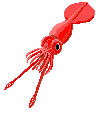- Joined
- Oct 19, 2003
- Messages
- 3,111
myopsida;122551 said:Mark is having problems because Olaf stretched the waders!
I heard that
myopsida;122551 said:Mark is having problems because Olaf stretched the waders!
ob;122591 said:Such a shame, en route aboard an ageing Ilyushin, when this all happenedI've checked the blog though, seems to have come off rather nicely!
 or
or  ? That is the question!
? That is the question!Tintenfisch;115434 said:As Jean said, it's actually the giant squid we believe to be more the sit-and-wait type (very small fins, relatively weak mantle musculature, body not strongly attached to mantle - all things that would be problematic for prolonged, fast swimming), while the colossal appears to be a very active swimmer (extremely large fins, very thick, muscular mantle, head fused to the mantle as in all cranchiids).
The giant and colossal squids are in different families (Architeuthidae and Cranchiidae respectively); each family is a group of genera that have certain morphological traits in common, so some of the differences are 'because' they're in different families (or, you could say they're in different families because of some of the differences), e.g. the means by which the head is attached to the mantle. Within the families there can also be a wide range of morphologies - different relative fin-size or arm-length for example. Have a look at some of the cranchiids at the link above - even the eyes vary a lot (and some are very strange.) The cranchiids are morphologically quite diverse, so Mesonychoteuthis has some big (ha ha) differences even from other genera in the same family. With Architeuthis, it's hard to say what variations there could be within the family, because at present (according to genetics at least), there is only one genus and species worldwide, Architeuthis dux.
Hope this helps.

Steve O'Shea;122841 said:Ahhhhh, but we can hypothesise quite a lot, my good man (from a dead specimen). I've had many an interesting discussion with a dead squid in a jar.
With it I am quite comfortable saying that the arms would normally be in the 'up' position, like you said.
Steve O'Shea;122914 said:.... or maybe the squid swims upside down, has the arms oriented down, which is actually up. The more I think about this the more inclined I am to propose yet another alternative - that Mesonychoteuthis is infaunal, building caves in the sea bed, ambushing hapless fish that swim into them seeking refuge. By using its enormous bulk, supremo cranium and gigonotic eXRay capability - a teuthoid version of XRay - it couples laser-death rays and gelato-blottomous pulsoid transmissions through the two cerebro-cranial opticus maxima, blinding, dazzling, confusing and debilitating predator and prey species.
Steve O'Shea;122914 said:.... gelato-blottomous pulsoid transmissions through the two cerebro-cranial opticus maxima, blinding, dazzling, confusing and debilitating predator and prey species.

